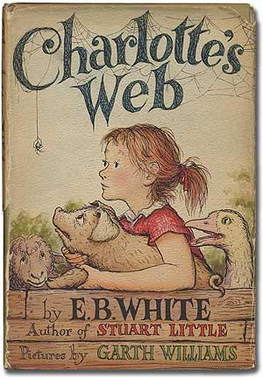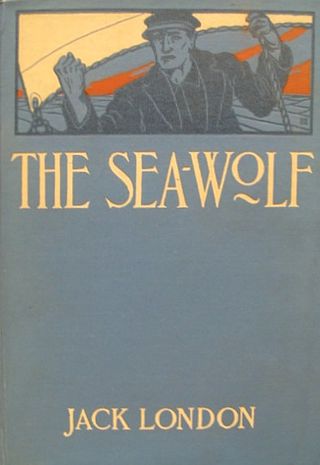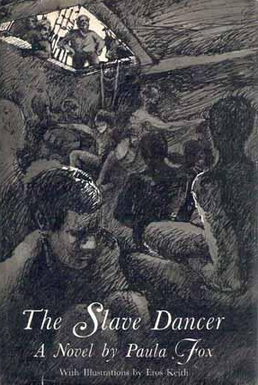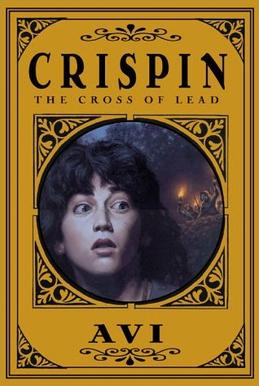William Sherman Pène du Bois was an American writer and illustrator of books for young readers. He is best known for The Twenty-One Balloons, published in April 1947 by Viking Press, for which he won the 1948 Newbery Medal. He was twice a runner-up for the Caldecott Medal for illustrating books written by others, and the two Caldecott Honor picture books, which he also wrote.
John Robert McCloskey was an American writer and illustrator of children's books. He both wrote and illustrated eight picture books, and won two Caldecott Medals from the American Library Association for the year's best-illustrated picture book. Four of the eight books were set in Maine: Blueberries for Sal, One Morning in Maine, Time of Wonder, and Burt Dow, Deep-water Man. His best-known work is Make Way For Ducklings, set in Boston. In longer works, he both wrote and illustrated Homer Price and he illustrated Keith Robertson's Henry Reed series.

Charlotte's Web is a book of children's literature by American author E. B. White and illustrated by Garth Williams; it was published on October 15, 1952, by Harper & Brothers. The novel tells the story of a livestock pig named Wilbur and his friendship with a barn spider named Charlotte. When Wilbur is in danger of being slaughtered by the farmer, Charlotte writes messages in her web praising Wilbur, such as "Some Pig" and "Humble", to persuade the farmer to let him live.

The Sea-Wolf is a 1904 psychological adventure novel by American writer Jack London. The book's protagonist, Humphrey Van Weyden, is a literary critic who is a survivor of an ocean collision and who comes under the dominance of Wolf Larsen, the powerful and amoral sea captain who rescues him. Its first printing of forty thousand copies was immediately sold out before publication on the strength of London's previous The Call of the Wild. Ambrose Bierce wrote, "The great thing—and it is among the greatest of things—is that tremendous creation, Wolf Larsen... the hewing out and setting up of such a figure is enough for a man to do in one lifetime... The love element, with its absurd suppressions, and impossible proprieties, is awful."
Rodman Philbrick is an American writer of novels for adults and children. He has written popular children's books such as Freak the Mighty, Max the Mighty, The Last Book In The Universe, and has written other mysteries and thrillers for adults.

The Horse Soldiers is a 1959 American adventure war western film set during the American Civil War directed by John Ford and starring John Wayne, William Holden and Constance Towers. The screenplay by John Lee Mahin and Martin Rackin was loosely based on Harold Sinclair's 1956 novel of the same name, a fictionalized version of Grierson's Raid in Mississippi.

The Chronicles of Prydain is a pentalogy of children's high fantasy Bildungsroman novels written by American author Lloyd Alexander and published by Henry Holt and Company. The series includes: The Book of Three (1964), The Black Cauldron (1965), The Castle of Llyr (1966), Taran Wanderer (1967), and The High King (1968). The Black Cauldron earned a 1966 Newbery Honor, and The High King won the 1969 Newbery Medal.

Jorge Alejandro Newbery Malagarie was an Argentine aviator, civil servant, engineer and scientist. He died in an airplane crash on 1 March 1914, at the age of 38.
Yogi's Great Escape is a 1987 animated made-for-television film produced by Hanna-Barbera as part of the Hanna-Barbera Superstars 10 series. The two-hour film aired in syndication.

Rifles for Watie is a children's novel by American writer Harold Keith. It was first published in 1957, and received the Newbery Medal the following year.

The Slave Dancer is a historical novel written by Paula Fox and published in 1973. It tells the story of a boy called Jessie Bollier who witnessed first-hand the savagery of the Atlantic slave trade. The book not only includes a historical account, but it also touches upon the emotional conflicts felt by those involved in transporting the slaves from Africa to other parts of the world. It tells the story of a thirteen-year-old boy, Jessie Bollier, who is put in a position which allows him to see the African slave trade in person. Jessie is captured from his New Orleans home and brought to an American ship. There he is forced to play the fife in order to keep the other slaves dancing, and thus strong when they arrive at their destination. The book received the Newbery Medal in 1974.

Crispin: The Cross of Lead is a 2002 children's novel written by Avi. It was the winner of the 2003 Newbery Medal. Its sequel, Crispin: At the Edge of the World, was released in 2006. The third and currently final book, Crispin: The End of Time, was released in 2010.

It's Like This, Cat is a novel by American writer Emily Cheney Neville, which won the Newbery Medal for excellence in American children's literature in 1964. It's Like This, Cat was Neville's first book.

Rules is the debut novel by author Cynthia Lord. Released by Scholastic, Inc. in 2006, it was a Newbery Honor book in 2007. It is a Sunshine State Young Readers book for 2008–2009 and won A 2007 Schneider Family Book Award. In 2009 it also won the Dorothy Canfield Fisher Children's Book Award.
Harold & Kumar is the name of a series of American films created by Jon Hurwitz and Hayden Schlossberg. Beginning with Harold & Kumar Go to White Castle (2004), and followed by Harold & Kumar Escape from Guantanamo Bay (2008) and A Very Harold & Kumar Christmas (2011), the films star John Cho, Kal Penn, and Neil Patrick Harris.
William Henry Singleton gained freedom in North Carolina and served as a sergeant in the United States Colored Troops during the American Civil War. After its end and emancipation, he moved North to New Haven, Connecticut. There he became literate and a minister in the African Methodist Episcopal Zion Church, serving also in Maine and New York.
Mott the Hoople is a 1966 novel by Willard Manus, and is best remembered as providing the name for a British rock group of the 1970s.

The Sea Wolf is a lost 1920 American drama film based upon the 1904 novel by Jack London, directed by George Melford, and starring Noah Beery as the brutal sea captain Wolf Larsen, sometimes referred to as "The Sea Wolf." The supporting cast includes Mabel Julienne Scott, Tom Forman, Raymond Hatton, and A. Edward Sutherland.

"Apple Thief" is the name of the eleventh episode of the third season of the American animated television series Adventure Time. The episode was written and storyboarded by Tom Herpich and Bert Youn, from a story by Mark Banker, Kent Osborne, Patrick McHale, and series creator Pendleton Ward. It originally aired on Cartoon Network on October 3, 2011 and guest stars Ron Lynch as Mr. Pig.












